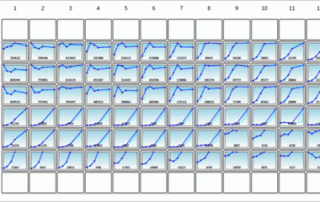Time-Course Monitoring of Primary Murine B1 and B2 Cell Proliferation using Cellometer Vision Image Cytometer
It's White Paper Wednesday! Read our featured white paper: Time-Course Monitoring of Primary Murine B1 and B2 Cell Proliferation using Cellometer Vision Image Cytometer Cell proliferation is an important assay for pharmaceutical and biomedical research to test the effects of a variety of treatments on cultured primary cells or cell lines [1, 2]. Previously, we have reported a rapid and accurate fluorescence-based cell population analysis method using a novel image-based cytometry system. The method is highly comparable to traditional flow cytometry using fewer cells [3-6]. Here we report the development of a novel method for the kinetic measurement of cell [...]

